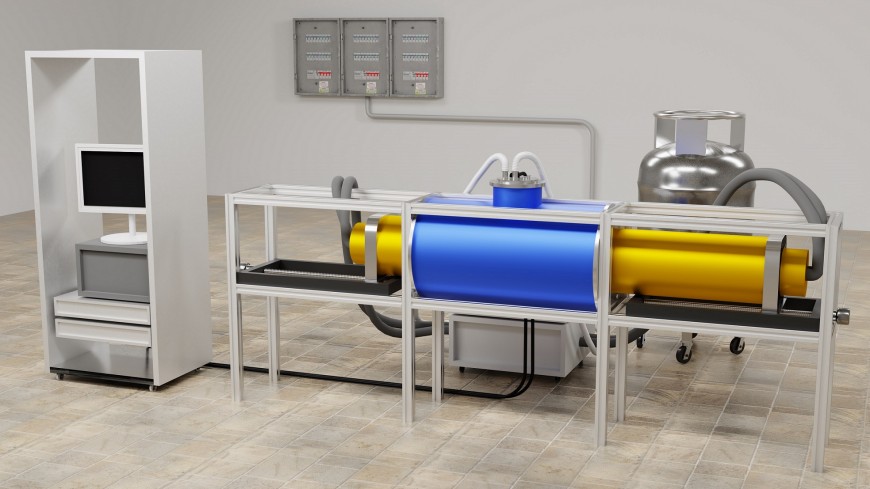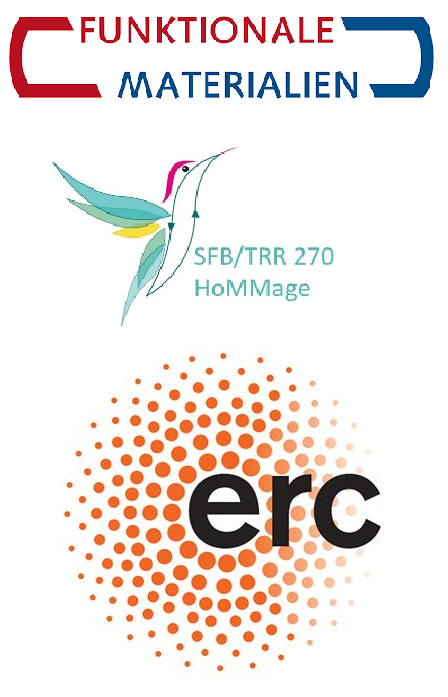Industrial-scale magnetic cooling
Magnetocaloric effect for more efficient hydrogen liquefaction
2023/03/29
Hydrogen will play a key role in the transformation towards a carbon-neutral society. By comparison with current usage, it is estimated that global hydrogen requirements will increase fivefold by 2050 to some 550 million tons. But in order to store hydrogen, enormous amounts of energy are needed. During liquefaction, approximately a third of the energy content of hydrogen is lost, which makes the process largely uneconomical. In the Horizon Europe project HyLICAL with a budget of about some five million euros, a team including the Helmholtz-Zentrum Dresden-Rossendorf (HZDR), TU Darmstadt and the start-up MAGNOTHERM wants to significantly improve the technologies for storing liquid hydrogen. To this end, the team is building on magnetocaloric materials that change their temperature when they are exposed to a magnetic field.

“In this joint project with partners from nine European countries we want to drastically reduce the energy used in hydrogen liquefaction as well as the investment and operating costs,” says Dr. Tino Gottschall of the Dresden High Magnetic Field Laboratory (HLD) at HZDR. For this purpose, the partners want to pool their expertise in materials research, plant development and simulation, and develop a new technology.
Energy can be stored and transported in the form of liquid hydrogen. But this pre-supposes a cost-effective liquefaction method. Liquid hydrogen has a 70 percent higher volumetric energy density than the gaseous hydrogen compressed at hydrogen filling stations. This is what makes the transport and storage of large volumes of liquid hydrogen so attractive. In the future, hydrogen could play a bigger role in transportation – for example, by becoming an energy carrier for heavy-duty mobility. The hydrogen liquefaction proposed in HyLICAL is designed to explore the technological feasibility of handling large amounts of hydrogen.
Magnetocaloric effect: breaking out of its niche
“We want to establish a different liquefaction technology based on the principle of magnetic cooling. If we compare it figuratively with the conventional cooling process, a magnet would take on the role of the compressor and the magnetocaloric material would be the cooling agent. Together they allow us to achieve the low temperatures that are required for hydrogen liquefaction,” says Prof. Oliver Gutfleisch of the Institute of Materials Science at TU Darmstadt, outlining the idea underlying the project.
Following many years of joint preliminary work, the company MAGNOTHERM, a TU Darmstadt spin-off, was established in 2019. The start-up’s main aim is to launch magnetic cooling onto the market. One commercial product already exists: a drinks cooler for industrial applications. “Our technology also means a huge increase in efficiency and sustainability, completely free of compressors and environmentally harmful cooling gases. We can thus accelerate the green transformation,” explains Timur Sirman, one of MAGNOTHERM’s managing directors. HyLICAL is now the next step on the path to low-temperature applications.
The goal: five tons of liquid hydrogen – per day
The researchers now want to construct a prototype that will help to introduce magnetic cooling into industrial hydrogen liquefaction. In this context, the team can draw on HLD’s long-established expertise both in developing and manufacturing magnetic coils as well as in cryotechnology. “We have already investigated many magnetic materials in high fields – this materials library is a treasure trove of experience on which we can build,” says Gottschall, one of the founders of MAGNOTHERM. At TU Darmstadt, scientists are already developing magnetocaloric materials which function in the targeted temperature range. “To liquefy hydrogen, we need a temperature of minus 253 degrees Celsius. To get near these very low temperatures we pre-cool using liquid nitrogen which takes us to minus 196 degrees. Our magnetocaloric material then has to do the rest,” explains Gutfleisch.
The pilot plant is supposed to demonstrate that industrial-scale hydrogen liquefaction can be carried out using the magnetocaloric principle, which in concrete terms means producing more than five tons every day. Moreover, the researchers want to cut back the use of critical raw materials. By utilizing liquefaction, they are expecting to reduce energy consumption by up to 50 percent in comparison with the conventionally established technology. This should all serve to make liquid hydrogen much cheaper. In addition, the concept has scope for implementing liquefaction plants that can operate locally on a small scale. By operating this way, the technology also becomes interesting for expanding renewable energy sources. As it is frequently generated locally, this energy could thus be temporarily and advantageously stored via the detour of liquid hydrogen.



